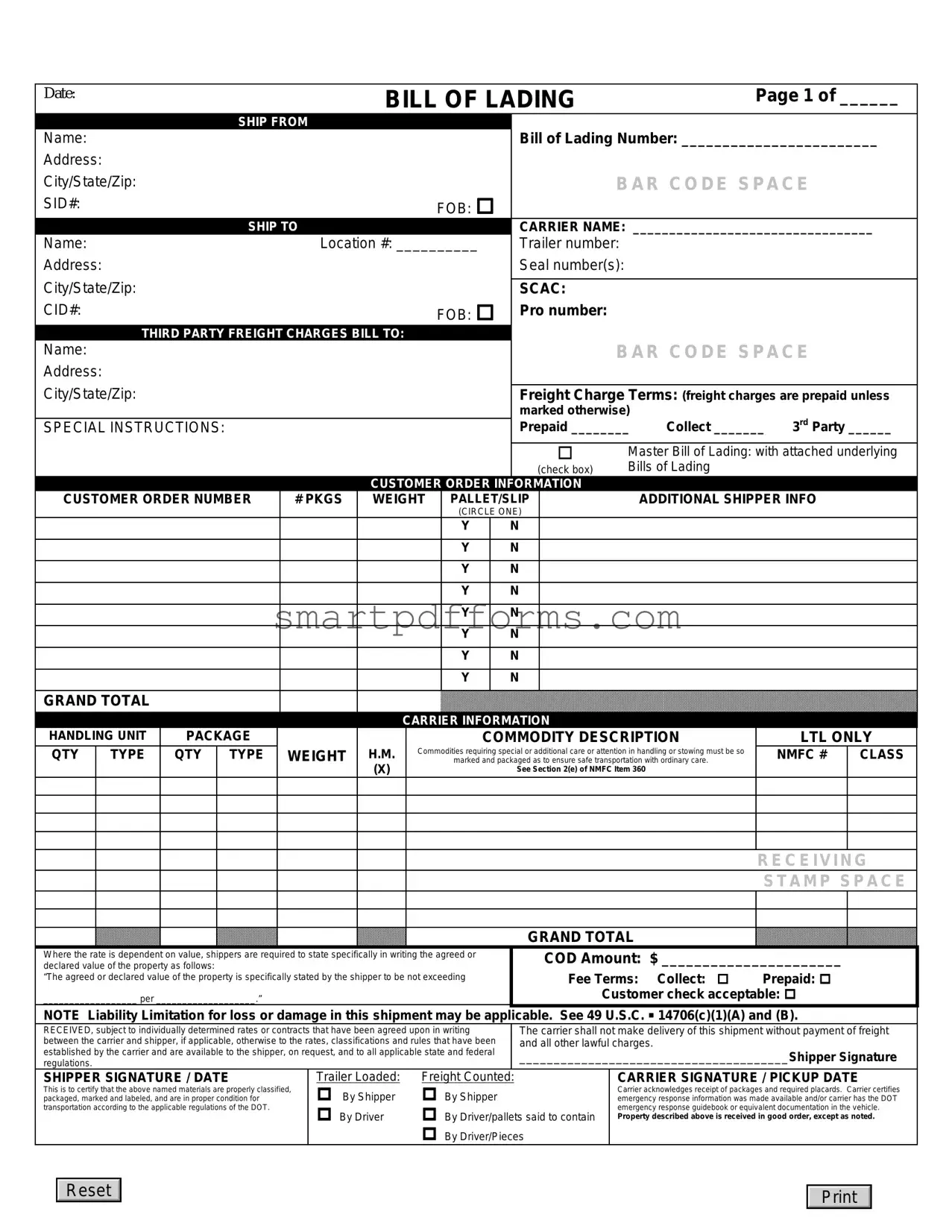The Bill of Lading form serves as a pivotal document in the shipping industry, encapsulating a range of critical functions that underpin the entirety of global trade. Used to acknowledge the receipt of cargo for shipment, this form acts as a contract between the party shipping the goods and the carrier tasked with their transportation. Furthermore, it operates as a title document, playing a crucial role in the control and ownership of the goods in transit. Given its multifaceted nature, the Bill of Lading is not only a receipt but also detailed evidence of the terms and conditions agreed upon for the carriage of goods. This legal document ensures transparency and accountability, providing all parties involved with a clear understanding of their obligations, the nature of the goods being transported, and the specific terms of their agreement. Its significance cannot be overstated, as it directly impacts the efficiency of shipping operations, the protection of rights, and the resolution of disputes. Moreover, in the complex ecosystem of international trade, it facilitates the seamless transfer of goods across borders, underscoring the importance of accuracy, completeness, and legal compliance in its preparation and handling.

